cool! too bad MPM 1/48 he 177 is way too expensive or me and I would have no place to put a he 177 let alone a 277 
Come on, it will be fun. Everyones doing it. 
Not a production aircraft but interesting continuation of the dual bomber/transport concept.
Messerchmitt P.08.01.
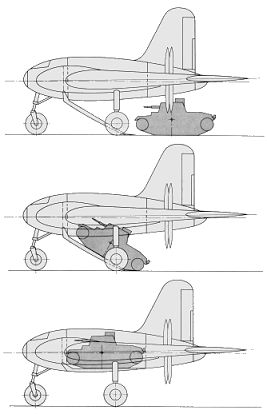
In early 1939, Dr. Alexander Lippisch moved to the Messerschmitt Aircraft Company in Augsburg with most of his closest coworkers. Dr. Wurster designed the P.08.01 in September 1941, which was basically a flying wing design. The wing featured two different sweepback angles, and contained the armored fuel tanks. The fuel could also be jettisoned if need be. Four Daimler Benz DB 615 engines (or DB 613 if teh DB 615 engines were not ready in time), mounted on the wing trailing edge, provided the power. The engine radiators were located in the wing’s leading edge and a huge bomb bay/cargo area was to be found in the central fuselage area. A tricycle landing gear arrangement was chosen, with the main gear having double wheels.

The cockpit was pressurized and a provision was made for remote controlled defensive armament in the nose and tail. Underwing weapons or loads could also be carried. The P.08.01 was designed as per a specification for a super heavy aircraft that could fulfill several different roles. These included:
[ul]
[li]Long range bomber with a bomb load of 20000 kg (44092 lbs) and a range of 15000 km (9321 miles)[/li][li]Maritime patrol aircraft with a bomb load of 20000 kg (44092 lbs) of radio-controlled glide bombs, mines or torpedoes[/li][li]Tactical bomber with 50000 kg (110230 lbs) and a range of 2500 km (1554 miles)[/li][li]Long range reconnaissance aircraft with a range of 27000 km (16778 miles)[/li][li]Tactical or strategic wide-body transport with a provision to carry at least a 25 ton tank or an equivalent amount of equipment[/li][li]Tow aircraft for transport gliders up to 100000 kg (220460 lbs) flying weight[/li][li]Flak carrier aircraft for four 88mm flak cannons[/li][/ul]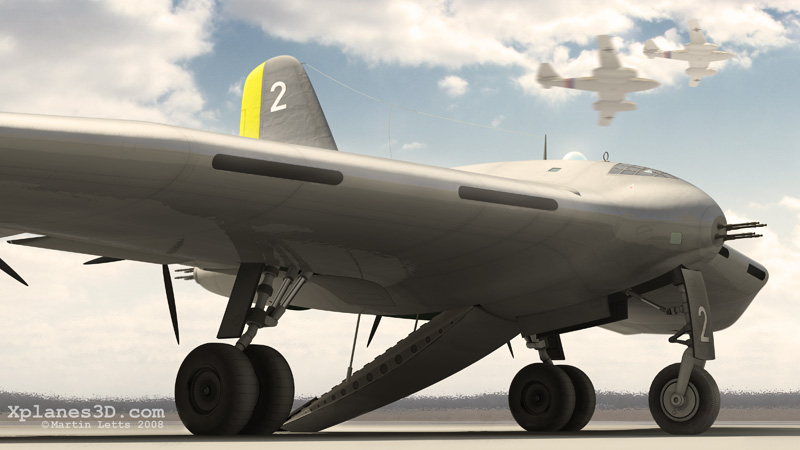
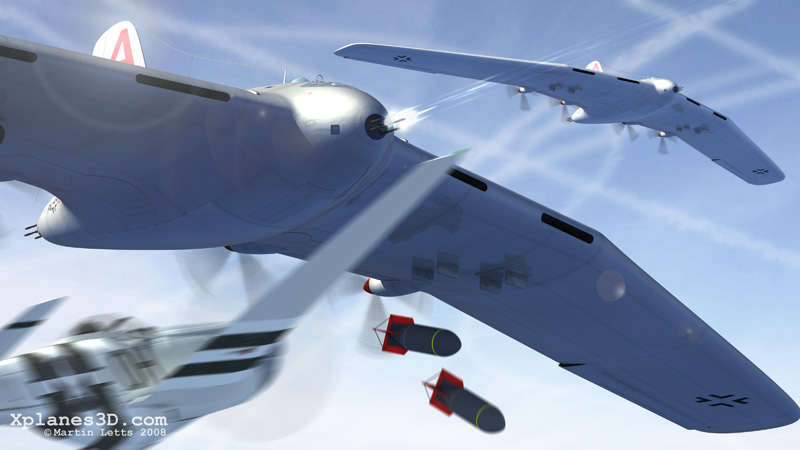
Wouldn’t there be trouble find the COG of the plane after taking new loads like a tank? Cause a flying wing only works by having a perfect COG in the wing to achieve leveled flight right? Amirite?
The tank seems to be near the center of gravity, just my view. :rolleyes:
Not really. Paint a line on the floor of the aircraft marking the CofG. Paint a line on the tank marking the CofG. Ensure the two lines are level. Job jobbed.
Nope. If it did it would be unable to climb, descend or go around corners!
Windrider wrote on page 2:
Here’s an interesting story for the conspiracy/mystery lovers…
There is some debate as to whether both of the two Ju 390 built flew. FAGr.5 unit logs show that the V1 prototype (serial marking GH+UK) was used. A Rechlin Test pilot, Oberleutnant Eisermann records in his logbook that he flew the V2 prototype (RC+DA) as late as February 1944. Photographs of two quite distinct Ju 390 aircraft in flight survive from World War II, but the airframe of prototype number 2 was never located after the war.
Hitler’s armaments minister Albert Speer gave testimony that a Ju 390 aircraft flown by Junkers test pilots flew a polar route to Japan in 1944.
Actually Windrider everybody has gotten it wrong for years. The Ju-390 with markings GH+UK is longer than the other marked RC+DA. The Ju-390 V1 was just 31.1 metres long. The Ju-390 V2 was longer at 34.2 metres.
It is no conspiracy theory. There were two Ju-390 aircraft. Just check out the photos. RC+DA was Ju-390 V1. Ju-390V2 was GH+UK.
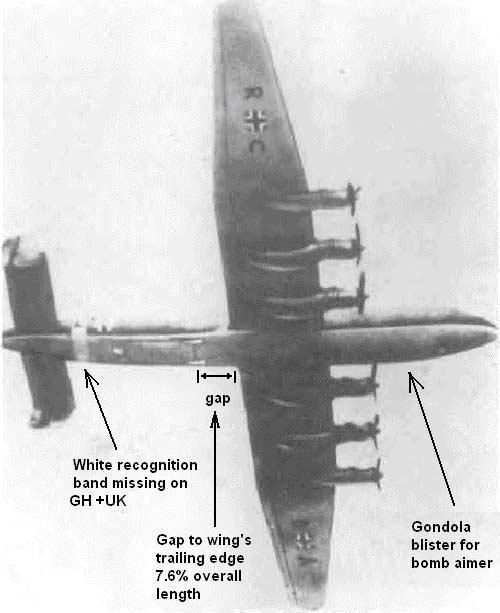
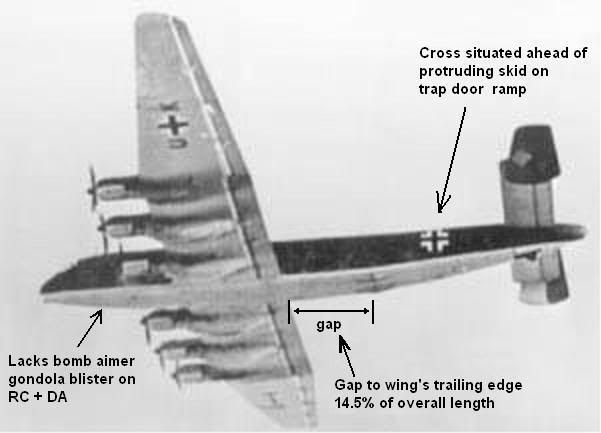
The Messerschmitt Me 321/323 Gigant
NOTE:Text is in order of photos
With the sudden realisation that existing assets would be in sufficient to the task of invading Great Britain, the Luftwaffe ordered a giant aircraft to transport men, supplies and vehicles. The immense Gigant family dwarfed all other contemporary aircraft, but suffered innumerable problems, leading to its eventual demise.
By 1943, the Me 323E-1 had become the standord model. It had greater fuel capacity, more armour and enchanced armament compared to the previous variants.
The planned invasion of the British Isles, Operation Sealion required heavy equipment to be airlifted with the first airborne assault. Although the invasion never took place, the Me 321 transport glider did reach production status.
Seen here head-on is the Me 323 V1, prototype of the four-engined Me 323C series which was not put into production. The four GR 14N 48/49 engines did not provide suffucuent power for take-off at full load and, although the Troikaschlepp was not essential, a powerful tug would still have been required.
Take-offs were a problem for the Me 321. There was no aircraft of sufficient power available in numbers to launch the glider and, following rather discouraging model tests, the Troikaschlepp was devised.
This involed three Messerschmitt Bf 110s all pulling one me 321, the centre tug having a towline 66 ft (20 m) longer than those of the others.
(No text, pic has the text in it.)
The ultimate standard formof Gigant was the Me 323E-2, this is an E-2 OF I./TG 5, which was desperately overworked on the Eastern Front from late 1943.
This aircraft has a white stripe ahead of the tail instead of the expected yellow theatre band.
The E-2 differed from earlier versions chiefly in defensive armament, the normal fit comprising two hand-aimed MG 131s low down in the front doors, another MG 131 firing aft from the radio compatment behind the cockpit, two 20-mm MG 151s in low-drag EDL 151 turrets behind the outboard engines, and four single MG 131s firing from front and rear beam positions.
there’s already a Me 323 topic on this forum. Could you add your content instead of starting a new one ?
Sorry didint know.
No problem mate. Nice pictures though… What book is that ?
Copy your post and paste it here:
http://www.ww2incolor.com/forum/showthread.php?t=4618
And ask a Mod to delete this thread.
No need - with my awesome powers of moderation I can just merge the two threads together!
The book is called The Encyclopedia of Aircraft of WWII.
but then that’s why there are control surfaces for the plane and any plane in general.
The forgotten big and heavy brother of the Ju-52 3m

bleah! i saw the nose, it’s so ugly. why couldn’t they just have twin like the c-47? I know the advantages of having 3 engined planes for safety reasons but you don’t get efficient prop wash with a engine in front of the nose.
True, my dear Mr. SS Ouche-Vittes, but in some cases that “central” propwash, if I may say so, could be usable.
As you know, propwash moves as a helix, spiraling backwards around the fuselage like a corkscrew rotating in the same direction of motion as the propeller. The wash thus strikes body, wing and all tail surfaces at an distinctive angle, and usually has an especially powerful effect upon yaw - by changing the angle of attack of the fin and rudder (which must be deflected to make the airplane fly straight). A right-hand propeller (rotating to the right, or clockwise when seen from behind) causes propwash to come from the left, inducing a fin side-force to the right, which yaws the nose to the left, so that the pilot has to apply right rudder, or vice versa.
However, that helix – theoretically! – if adequately deflected by certain specific aerodynamical surfaces, is exploitable for additional lift augmentation. Some sadly neglected American experiences achieved with nowadays almost completely forgotten machine Northrop C-125 Raider are indicating that the epoch of a tri-motor configuration was somehow… unfairly ended. 
On the other hand, aforementioned problems were irrelevant for these airplanes. I hope that you will like them. 
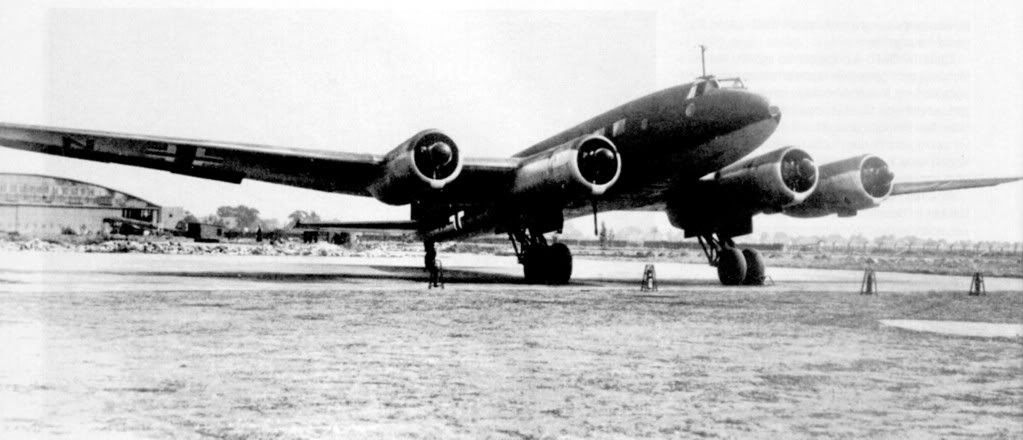
Fw 200 Condor C0 – VIP transporter of the Luftwaffe
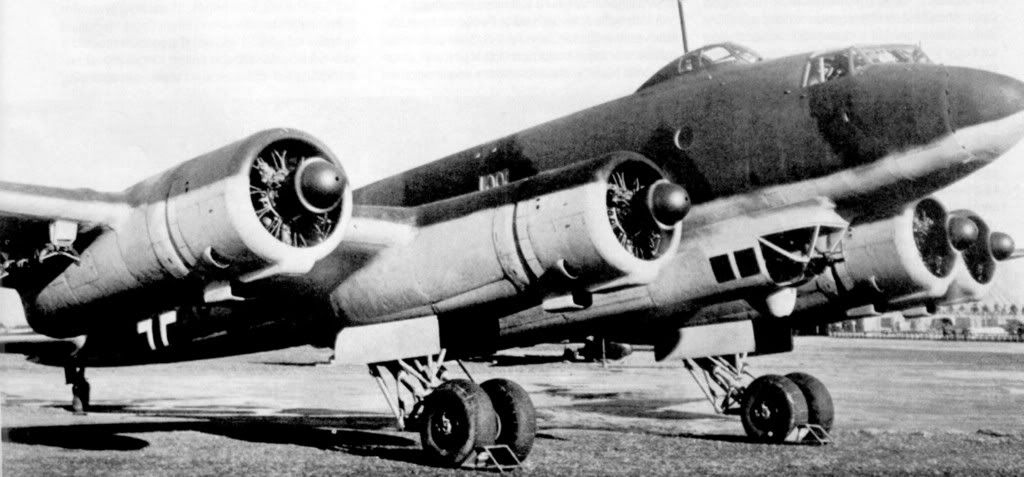
Fw 200 C-3
Although these airplanes are not those legendary CE + IB or GC + AE Condors of the Fw 200 C-4 U/1 type that belonged to the Fliegerstafel des Führers, I think that the following specific musical incantation will be suitable as augmentative moderato for an all-encompassing revocation of the past at the Berlin – Tempelhof in late thirties and early forties. Please, just follow this link:
http://audiofile.org.ua/song/235640.html
You know, even though a truly brilliant British composer Ron Goodwin composed this music for that magnificent motion picture “Battle of Britain” (filmed in 1969, directed by Mr. Guy Hamilton), this absolutely invocative and directly-striking piece of art is perhaps the most expressive portion of military music composed after the WW2 capable to represent the ruling spirit of those times.
Enjoy! 
I must say that the Germans had really acttractive equitment juring ww2, and also they had really good camouflage for there aircraft.
Note that the aircraft is dark on top- is to imic the ground and the bottom of the aircraft is light- is to imic the clouds.
Please dont attack me for this, i dont know how to type like youre guys can.
Truce.
Liberian, i first fell in love with the fw-200 Condor. I like condors, where i come from, condors are symbolized in art. i liked it cause i’ve never heard of it and because of it’s sleek design. But soon after i discovered the Ju-90/290/390s. Those i love too because they’re attractive and rare like the fw-200. I love the ramps on the junkers and the fact that they carried huge loads and possessed great range!
